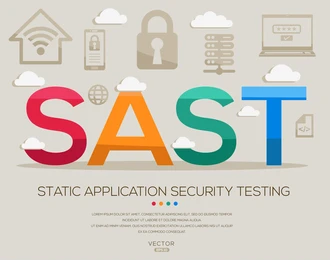SAST Solution


The evolution of networking has helped companies reach new customers, but it has also created many vulnerabilities. With more and more organizations using applications today, it's imperative to protect these entry points from next-generation threats. Status Application Security Testing (SAST) has become a key weapon in the fight against next-generation threats. But what exactly is SAST?
SAST Explained
SAST or static analysis is a white box testing methodology where the user can scan through source code, byte code, and binaries to find vulnerabilities. The static analysis takes place when the application isn’t running. After finding vulnerabilities the user can take steps to remediate the problem.
SAST takes place early in the Software Development Life Cycle (SDLC) to identify vulnerabilities before an application is released. In most enterprises when an issue is found inside the application source code the developers then start to correct the code to eliminate the vulnerability. Combatting vulnerabilities in the SDLC early is beneficial because it is more cost-effective to make improvements ahead of release. Trying to fix applications after a release costs more because small code changes could affect the performance of the entire application.
What do SAST Tools Do?
The main purpose of SAST tools is to guide users on how to write consistent code from the beginning of the SDLC so that developers don't have to redo everything after release. SAST tools automate code scanning and help find vulnerabilities during development. The SAST software platform allows users to view real-time feedback while coding. For example, developers can use software to scan for vulnerabilities. This will highlight the offending code on the screen and allow the user to fix it. By showing your users bad code, you can build secure applications quickly and efficiently. These tools also offer more comprehensive monitoring capabilities such as dashboards and reports, allowing users to monitor security issues found. These features help with remediation and give developers the information they need to move forward after finding broken code. Faster remediation means less exposure to threats.
Why is SAST Important?
Static analysis is important in organizations where the application is widely used or a critical business requirement. In recent years, many cybercriminals have started exploiting application vulnerabilities to obtain personal data. Using SAST and other application testing models is just as important as deploying an antivirus solution. Without a SAST solution, organizations cannot determine whether their application source code is secure. Cybercriminals can easily use insecure source code to gain access to your network and cause thousands of dollars in damage. Testing reduces the chances of an attacker compromising your application.
SAST isn't the only form of application testing you need (see SAST and DAST below), but it's important to ensure that your application code is secure. SAST tools allow developers to easily troubleshoot coding issues and reduce potential entry points into the network. SAST is also important from a practical point of view. If issues are found and fixed early in the SDLC, they won't break your application after release. Static testing helps developers create secure applications from day one, eliminating costly rewrites of applications after release.
The Benefits of SAST
SAST solutions and static testing offer a range of benefits to modern organizations. In this section we’re going to look at some of the main benefits of SAST including the following:
- Detect source code vulnerabilities
- Early diagnostics!
- See the exact segment of code that’s causing problems


